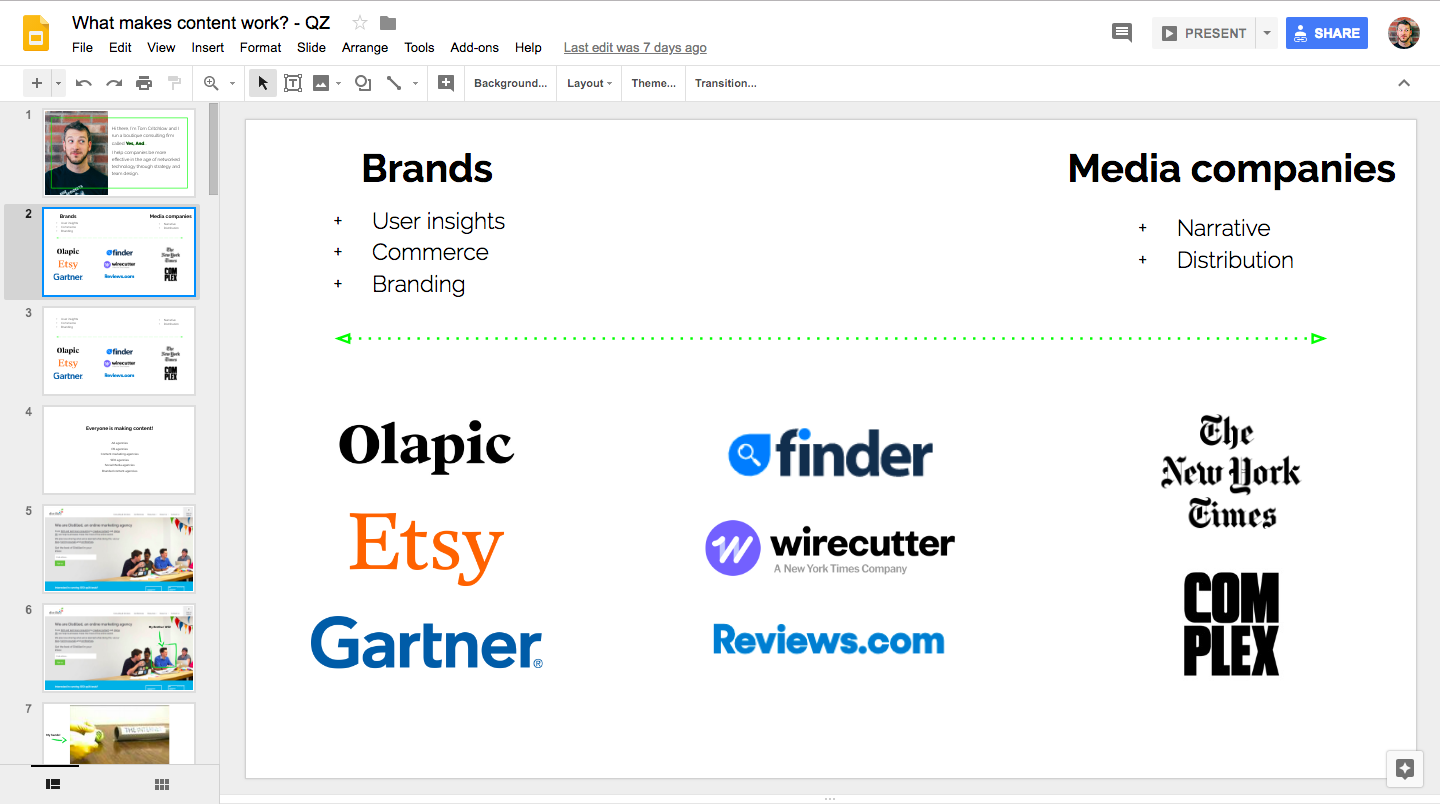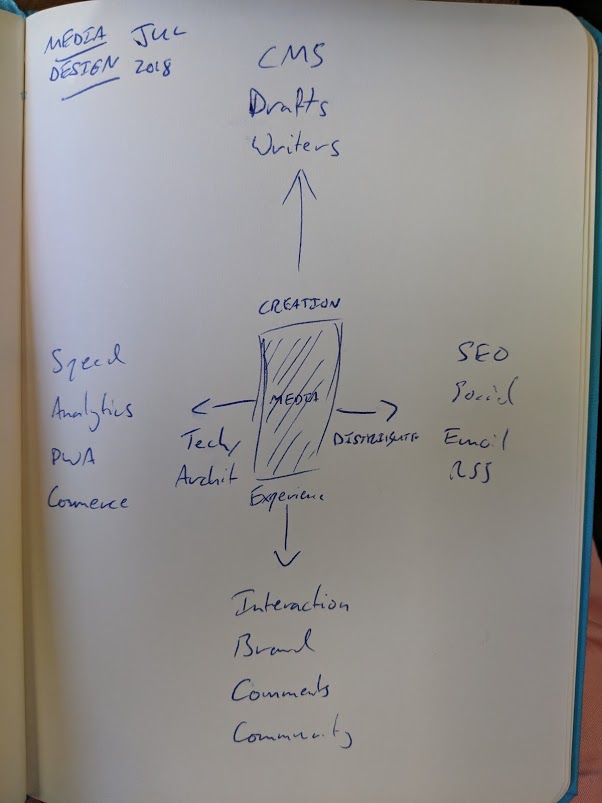The Practice of Media Design
An attempt to define and describe the landscape of my work
A few months back I gave a presentation to Quartz about my work and I made the slide below.
It outlines a tension I’ve been playing with for some time - that brands are increasingly acting like media companies and that media companies are increasingly acting like brands:

The Media/Brand Tension
In the distributed and networked world we live in there’s increasingly a tension between brands - who specialize in user acquisition, user insights and monetization - and media companies - who specialize in editorial, narrative, story and distribution.
Brands often lack distribution and interestingness.
Media companies often lack user insights, or a notion of branding.
(And there’s a grey area in the middle of affiliate businesses that generate content at the scale of media properties but are more savvy on the commercials while being less editorially interesting).
But there’s more depth here - this media/brand tension is a direct product of the changing nature of the networked world - namely distribution and technology.
Enter: Media Design
Content and technology have never been so interconnected and interdependent.
We live in an age where content is tied to, and sits upon, rapidly evolving and iterating technologies. Meanwhile, technology is increasingly generating, manipulating and pushing content to users in new ways.
My entire career has been spent here. Understanding the texture of content in the age of technology.
To better articulate the work I do and describe the landscape I see - I have begun using the term “Media Design”. I’m not the first to use the phrase, though existing uses vary quite wildly.
Here’s my stab at a definition:
Media Design is the practice of designing effective systems of content within the overlapping ecosystems of technology, distribution, production and experience.
While on the Amtrak last week to spend the day on-site with a client I sketched out a crude model for how this system might function:

The four axis of Media Design as I sketched them:
- Technology is the medium & infrastructure for content. The context and frame for any content experience - across hosting and platform considerations to analytics, reporting, monetization & information architecture. Concerns here are often around product design, personalization, site speed, tracking and more.
- Creation of content is the process and planning of production. There is always an economy of who, how and when content is produced. From understanding the tone of voice to how the CMS shapes production choices and more.
- Distribution of content requires an understanding of algorithms and audiences, channels and communities. Concerns here often center around the tradeoffs of owning or renting distribution and how to chase short term vs long term traffic.
- Experience of content covers everything from the emotional experience (i.e. brand) to the actual actions taken (i.e. conversion). The experience and interaction with content is the ultimate mixture of editorial and aesthetic considerations and tactile technological constraints.
If I look back at my work everything starts to, maybe, make some sense within this framework. As a cross-disciplinary approach that ties together several disconnected fields it allows for an understanding of how technology and content play together in our networked age.
The established labels that I commonly work on are audience development, content marketing, content strategy, SEO, growth. But the most productive work always starts by understanding the media design system within a client’s business.
And the interesting piece is always in the tensions between the axes.
Media Design is the lens through which to solve the tensions of marketing in the networked age
How does marketing work in the networked age?
In the modern attention economy, too much content is a race to the bottom. SEO-first content is garbage 99% of the time. Brands trying to “blog” because they think “content marketing” is a function of making the marketing team produce content.
Meanwhile - the branding projects and big dollar marketing campaigns are too far disconnected from both the performance marketing ad slots and the teams of content production that are tasked with executing the vision.
So you’re left with either a spreadsheet-driven race to the bottom or a beautiful-but-disconnected vision. How do you close the gap? By considering the full ecosystem and the right contexts for your content - i.e. Media Design.
I have a personal fascination with understanding content within the right context - after working in SEO for over a decade and more recently overseeing branding projects and brand campaigns it’s increasingly obvious to me that no success can happen without situating your thinking within the context of the full ecosystem.
And the most successful clients I’ve worked with understand that content is a product, and that products are content.
Media Design is anti-disciplinary
Perhaps it would be better to say Media Design is anti-disciplinary1 rather than cross-disciplinary.
An attempt to break down the silos between the various distinct practices and disciplines that have emerged to support “content”, “media” and “marketing”. To strive for a better understanding of the full ecosystem.
All the projects I’ve seen fail have failed because they have been too focused on one axis of the spectrum and the strategy or execution hasn’t acknowledged the full system - from ignoring the brand implications of the content to not fully understanding the human editors who have to execute a vision.
Media Design is about designing for success by looking at the system and how the parts interplay to make each perform better by bringing them into a shared context.
More to come as I think through this idea and explore the space in more detail.
Will you join me?
–
-
A great read from Joi Ito on what it means to be antidisciplinary ↩
August 22, 2025
June 27, 2025
Google is Grounded and Needs to Learn How to Soar
March 21, 2025
This post was written by Tom Critchlow - blogger and independent consultant. Subscribe to join my occassional newsletter: